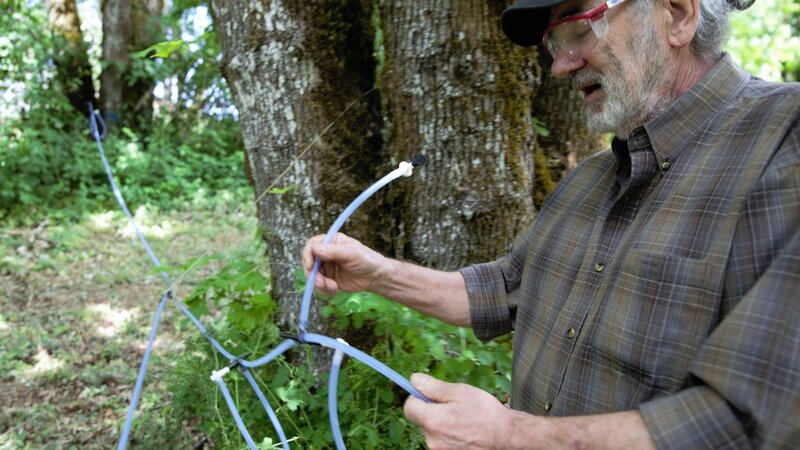Oregon hasn’t traditionally made a lot of maple syrup, largely because there’s more money in Douglas fir trees than maple trees. Doug firs produce straight logs that are good for construction. Maples, on the other hand, often grow crooked, so the wood is used for lower-value products like paper pulp.
Some old-school growers refer to maples as a “trash tree,” even though wood from maple trees is used in plenty of everyday items, including musical instruments and furniture.
The other reason Oregon hasn’t traditionally made maple syrup is that the variety of tree that grows here, the bigleaf maple, produces very watery sap. So maple syrup is much more expensive to produce in the Pacific Northwest.
But over the last few years, a couple of technical advances and now a tweak in the law, have prompted some Oregon landowners to take another look.
First came improvements in reverse osmosis pumps. They’ve been used for years to take salt out of seawater in ships. Now pumps have been upgraded to take water out of tree sap — concentrating the sugar to make maple syrup.



 Farming
Farming Agriculture
Agriculture Food/Chow
Food/Chow



